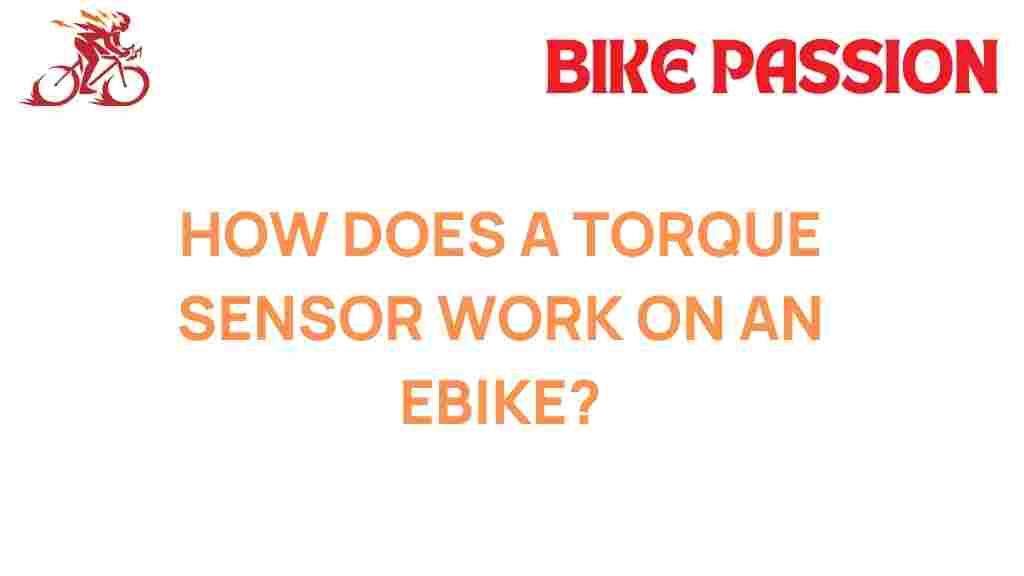Unraveling the Mystery: How Does a Torque Sensor Work on an E-Bike?
The rise of electric bikes, or e-bikes, has brought forth a new era of cycling technology, enhancing ride efficiency and overall cycling performance. One of the most crucial components of modern e-bike technology is the torque sensor. In this article, we will delve into the workings of a torque sensor, its impact on pedal assist systems, and how it contributes to cycling innovation. Understanding how a torque sensor operates can help you appreciate the mechanics behind your e-bike and improve your riding experience.
What is a Torque Sensor?
A torque sensor is a device that measures the amount of torque applied by the rider when pedaling. It plays a vital role in e-bike technology, especially in systems that utilize pedal assist. Torque sensors allow the electric motor to deliver power proportional to the force exerted by the cyclist, ensuring a smooth and efficient ride.
How Does a Torque Sensor Work?
Understanding the mechanics of a torque sensor involves breaking down its components and functionality. Here’s a step-by-step explanation of how it works:
- Measurement of Torque: The torque sensor is typically located in the bottom bracket or crank area of the e-bike. It uses strain gauges or similar technology to detect the force applied to the pedals.
- Signal Conversion: When the rider pedals, the torque sensor generates an electrical signal proportional to the amount of torque applied. This signal is then converted into a readable format for the e-bike’s control system.
- Communication with the Motor: The control system interprets the data from the torque sensor and sends commands to the motor. If more torque is detected, the motor will provide additional power, enhancing the rider’s effort.
- Real-time Adjustments: The torque sensor continuously monitors the rider’s input, allowing for real-time adjustments to the motor output. This responsiveness contributes to a natural cycling experience.
The Benefits of Using Torque Sensors in E-Bikes
Incorporating a torque sensor into e-bike technology offers several advantages:
- Enhanced Ride Efficiency: By providing power proportional to the rider’s effort, torque sensors help achieve greater ride efficiency. Riders can enjoy a more natural cycling experience without excessive motor assistance.
- Improved Cycling Performance: Torque sensors optimize the performance of electric bikes, allowing for better handling and control. Riders can tackle hills and rough terrains more effectively.
- Smoother Pedal Assist: The smooth transition between human input and electric assistance makes for a more enjoyable ride, especially during varying terrain conditions.
- Conservation of Battery Life: By matching motor output to the rider’s torque, e-bikes can conserve battery life, extending the distance you can travel on a single charge.
Types of Torque Sensors Used in E-Bikes
There are different types of torque sensors utilized in e-bikes, each with its own mechanism:
- Strain Gauge Sensors: These sensors measure the deformation of a material under stress. They are commonly used in e-bikes for accurate torque measurement.
- Hall Effect Sensors: These sensors detect changes in magnetic fields that correlate with torque. While less common than strain gauges, they offer another method of torque measurement.
- Capacitive Sensors: Utilizing changes in capacitance, these sensors can also measure torque, though they are not as widely used in the current e-bike market.
Integrating Torque Sensors with Pedal Assist Systems
One of the most significant applications of torque sensors is in pedal assist systems. Here’s how they work together:
- Adaptive Assistance: As the rider exerts more force on the pedals, the torque sensor communicates this to the motor, increasing assistance accordingly.
- Customizable Settings: Many e-bikes allow riders to adjust the level of assistance based on their preference or riding conditions, enhancing the smart biking experience.
- Feedback Mechanisms: Some advanced systems provide feedback to the rider, improving engagement and encouraging optimal cycling performance.
Troubleshooting Torque Sensor Issues
Like any technology, torque sensors can experience issues. Here are some common problems and troubleshooting tips:
- Inconsistent Power Delivery: If you notice that the power assistance feels erratic, check the sensor connections for any loose wires or damage.
- Calibration Problems: Some torque sensors may need recalibration. Refer to your e-bike manual for instructions on how to recalibrate the sensor.
- Software Glitches: Occasionally, software issues can affect sensor performance. Ensure your e-bike firmware is up to date.
- Physical Damage: Inspect the sensor for any signs of physical damage. If the sensor is damaged, it may need replacement.
Future of Torque Sensors in E-Bike Technology
As cycling innovation continues to evolve, so too will the technology behind torque sensors. Here are a few trends to watch for:
- Integration with Smart Technology: Future e-bikes may feature advanced sensors that integrate with apps to provide real-time analytics on cycling performance.
- Enhanced Sensor Mechanics: Improvements in sensor design may lead to lighter, more efficient components that enhance overall ride efficiency.
- Wider Adoption: As e-bike technology becomes more mainstream, torque sensors are likely to become standard across a wider range of models.
Conclusion
Understanding how a torque sensor works is essential for anyone interested in e-bike technology and cycling performance. These sensors not only enhance ride efficiency and provide a more natural cycling experience but also represent a significant advancement in cycling innovation. As the world of electric bikes continues to grow, torque sensors will undoubtedly play a crucial role in shaping the future of smart biking.
For more information on the latest e-bike technology, consider visiting this resource. If you want to explore other aspects of cycling technology, check out our article on cycling performance metrics.
This article is in the category Tech and created by BikePassion Team
